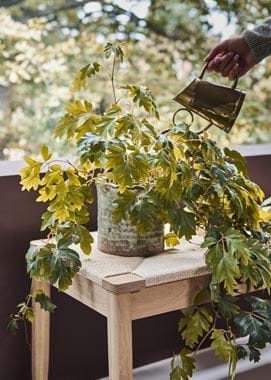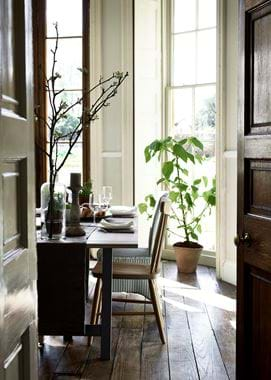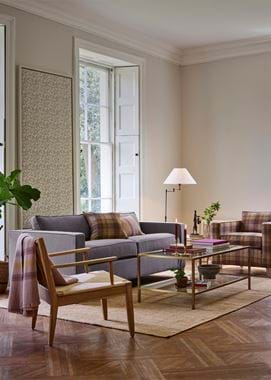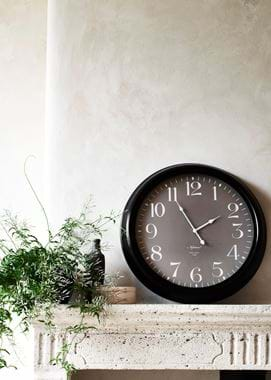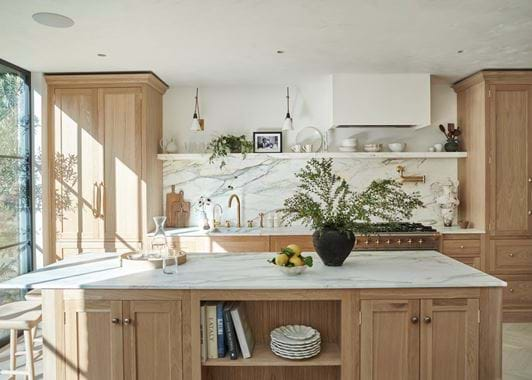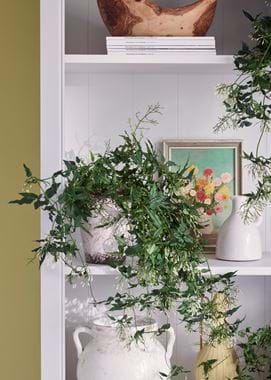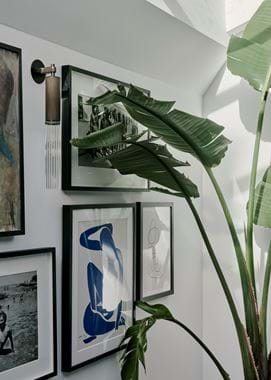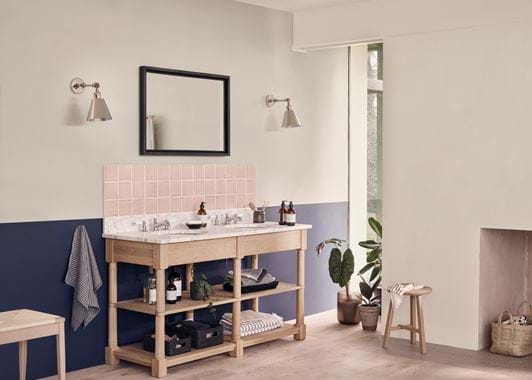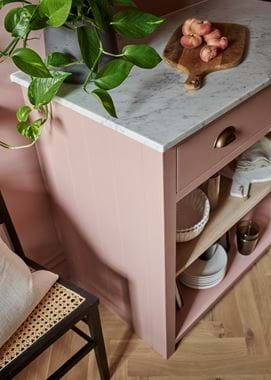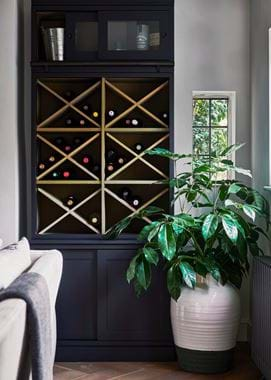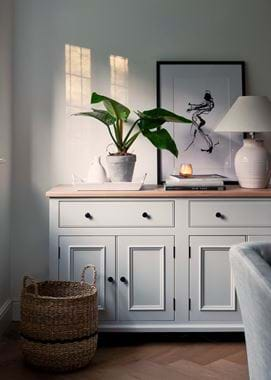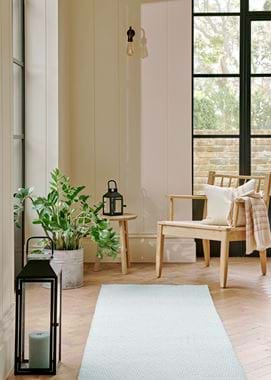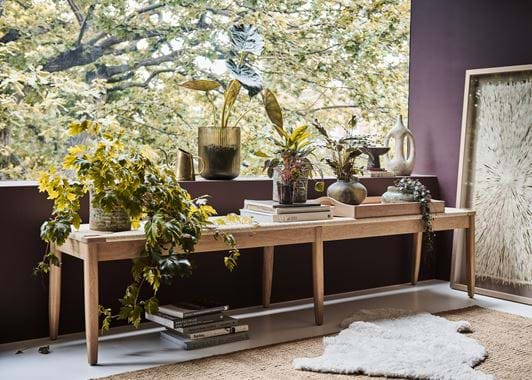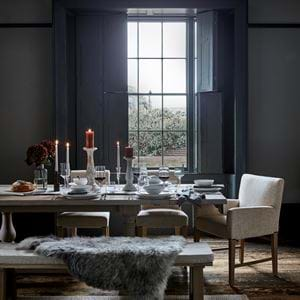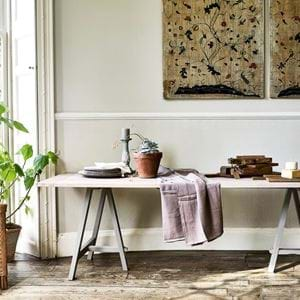What house plants can do for your home
What house plants can do for your home
There are lots of reasons you might want house plants around your home. They’ll add life to any decorating scheme, but beyond that, they have lots of health benefits too. Plants pump oxygen into the atmosphere. They also regulate humidity, which is better for your health. Some studies have even shown that house plants can improve sound levels, reduce stress and help you concentrate (as well as making the air generally fresher to breathe – especially beneficial come winter, when we tend to open windows less and the air around us needs a bit of extra help). Here’s our guide to making the most of house plants…
Style benefits
At their simplest, plants are about bringing a bit of life-boosting nature indoors. But, they’ll do much more besides that – greenery will add lightness and freshness to a room with warm colours (like neutrals, white or yellow), or give a bit of zing to a cooler palette (like blue or grey).
You can also use plants to enhance a room’s scale. In this airy dining room, for instance, tall, slender stems and a potted tree put the focus on the high ceilings while also making the wide, open space feel less empty.
Plants that like sunlight often get put next to the windows, but this does more than help them grow; it’ll also frame views of the garden (giving that feeling of bringing the outdoors in), filter harsh sunshine and provide a bit of extra privacy if you like to keep windows bare.
The plant in this wood-filled dining room works this way, while also flattering all the natural materials on show. Without it, the room just wouldn’t have the same life.
Choosing pots and holders
The right size and shape of pot will help your plant stay healthy as well as making it look good. Try to match the scale of the pot to the height and spread of the plant – and make allowances for fast-growing greenery. Baskets are great for bigger plants – in that first dining room, our Tetbury design suits the plant’s shape and it’s big enough to work with its size as it grows.
With slower-growing plants, like succulents, you can be a bit more creative with shapes, as you won’t need to keep re-potting. Shorter plants with good ground cover look lovely in wide, shallow vessels; taller ceramic pots suit slimmer plants, and so on. And as succulents are usually quite small, they’re great displayed in clusters for an indoor garden feel. Place on benches and small tables to make them look more interesting, and mix and match materials too – a basket like Littleton or a zinc trough works wonders in amongst ceramic pots.
With plants that trail, like ivy, think about using smaller pots and placing them up high – a mantelpiece is ideal, as pictured here, but you could also use hanging planters in front of a window or to brighten a dull corner.
Lastly, consider a vertical wall garden – they’re especially great for herbs in the kitchen. Companies like WallyGro sell modular units for indoor use and, once your plants get going, all you’ll see is a wall of living greenery.
Plants for living and dining rooms
Some plants have special properties that make them better-suited to certain rooms. In a large, bright living or dining room, something like a bamboo palm has a striking shape (this plant’s also one of the best at filtering out any formaldehyde in the air). The humble rubber plant is good for darker or cooler living rooms – it’s got plenty of structure so it suits a bigger space, and it needs hardly any looking after so it’s ideal for the less green-fingered.
Ivy’s another formaldehyde fighter that’s great where you want a varied display of greenery – you can trail it from a shelf, put it in a hanging planter or even use it to add interest to a bookcase.
Plants for kitchens
Good plants to have in kitchens include broadleaf palms – these clean ammonia from the air, often released by cleaning products – and aloe vera, which fights benzene, often found in detergents and plastics (use the sap to treat cooking burns, too). Both love humidity, so they’ll thrive in a kitchen atmosphere.
Plants for bedrooms and bathrooms
In these rooms, you might want to think about flowers and scent a bit more. Gerberas and chrysanthemums are lovely in bedrooms as they add some welcome colour and have a light, fresh scent. If you’d rather keep scent levels low, you could mix in some of our life-like flowers by ‘planting’ them in the pot – dahlias and ranunculas go well together and will give an outdoorsy, flowerbed feel. Also, look for plants that release air-purifying oxygen at night – moth orchids do this, or, if you prefer something greener, try a snake plant (also known as mother-in-law’s tongue, thanks to its long, curly leaves).
Peace lilies are the perfect scented plant for a bathroom as they love humid atmospheres and are also good at filtering any impurities from the air. They’re toxic to pets, though, so if that’s an issue, try ferns – another moisture-loving plant that feels just right in a bathroom. Their delicate leaves are restful to the eye and they like rooms with softer light or a bit of shade – something that often applies to the smallest rooms in the house.
Plants for beginners
If you’re not a confident gardener, we know it can be daunting to get to grips with indoor plants. A good tip for beginners is to start off by mixing real ones with our life-like ones, and to grow really low-maintenance varieties like spider plants – they’ll quickly produce lots of smaller shoots, which can be re-potted around your home, and their spiky leaves look good just about anywhere.

